We knew our camping trip was in trouble the moment we pulled into the Lmuma Creek Campground. We had reserved site #4 but it looked like the entire Clampett family—three generations of them anyway—had set up in site #3, with not an inch of grass between the two sites. Since our main objective when we camp is not to see or hear another soul, it wasn’t hard to just swing through the dusty parking lot and pull right out. Time for Plan B.
What better place to formulate your Plan B than in a local brewery over a plate of killer tamales? We headed for Union Gap to pick up some tamales at Los Hernández Tamales and then looped back to Single Hill Brewing to eat them. (Let me just say, if you’re in the Yakima area you really have to stop at Los Hernández, which won a James Beard Award in 2018 as an “American Classic”; trust me, or see the story in the Yakima Herald-Republic.)
Luckily, my buddy Konrad Moeller told me that if we didn’t like what we found in the Yakima River Canyon, we could always head up toward the mountains and take our chances. So we swung northwest out of Naches on state route 410, heading toward Chinook Pass, and pretty soon found a string of campgrounds.
The third campground we checked out, Sawmill Flats Campground, was a winner. Only four of the 23 sites were occupied, and site #8—out at the end of the loop—was a dream: right beside the Naches River, with a big flat spot for our tent and a little beach where we could set up our chairs. We popped out of the car, fully prepared to bathe ourselves in bug lotion—but there wasn’t a fly or a mosquito to be seen. We couldn’t believe our luck. We had found the perfect campsite.
The next day, after breakfast by the river, we took a short drive up to Chinook Pass and enjoyed a little 4-mile jaunt on the Naches Peak Loop, which included killer views of Rainier.
Along the loop we noticed a perfect little lake about a mile up the trail and—once we finished the loop—we packed up Sara’s new pochade box (see below) and returned to the lake. She set up to paint for a couple of hours while I scampered up into the rocks above the lake to take in the views and feed the Canada Jays (also known as Gray Jays).
I don’t think we’ll always get this lucky with all our camping trips—how could we? But for now, after two test runs, I think we’re ready to pronounce ourselves two happy tent campers.
And we learned a few lessons:
Never be afraid to bail on a shitty campsite.
Never stop looking for the “perfect campsite.” For me, it sits along a river and is out of sight and sound of humans. It sounds ridiculous to say you should hold out for the perfect campsite, doesn’t it? How often can one possibly find this? All I know is, I’ve found it twice in a row and I’ll keep swinging for the fences.
Mid-week is the time to camp: there’s no one else around.
I’m going to keep thinking of these as lessons, but eventually they may become “laws.”
What’s a Pochade Box?
A “pochade” is a quick sketch made in nature that is intended to capture the colors and atmosphere of a scene, and a “pochade box” is means of carrying everything an artist needs to create their pochades. Sara had this wooden box and gave me all the specs she’d need to make it work for her. This trip was its maiden journey.






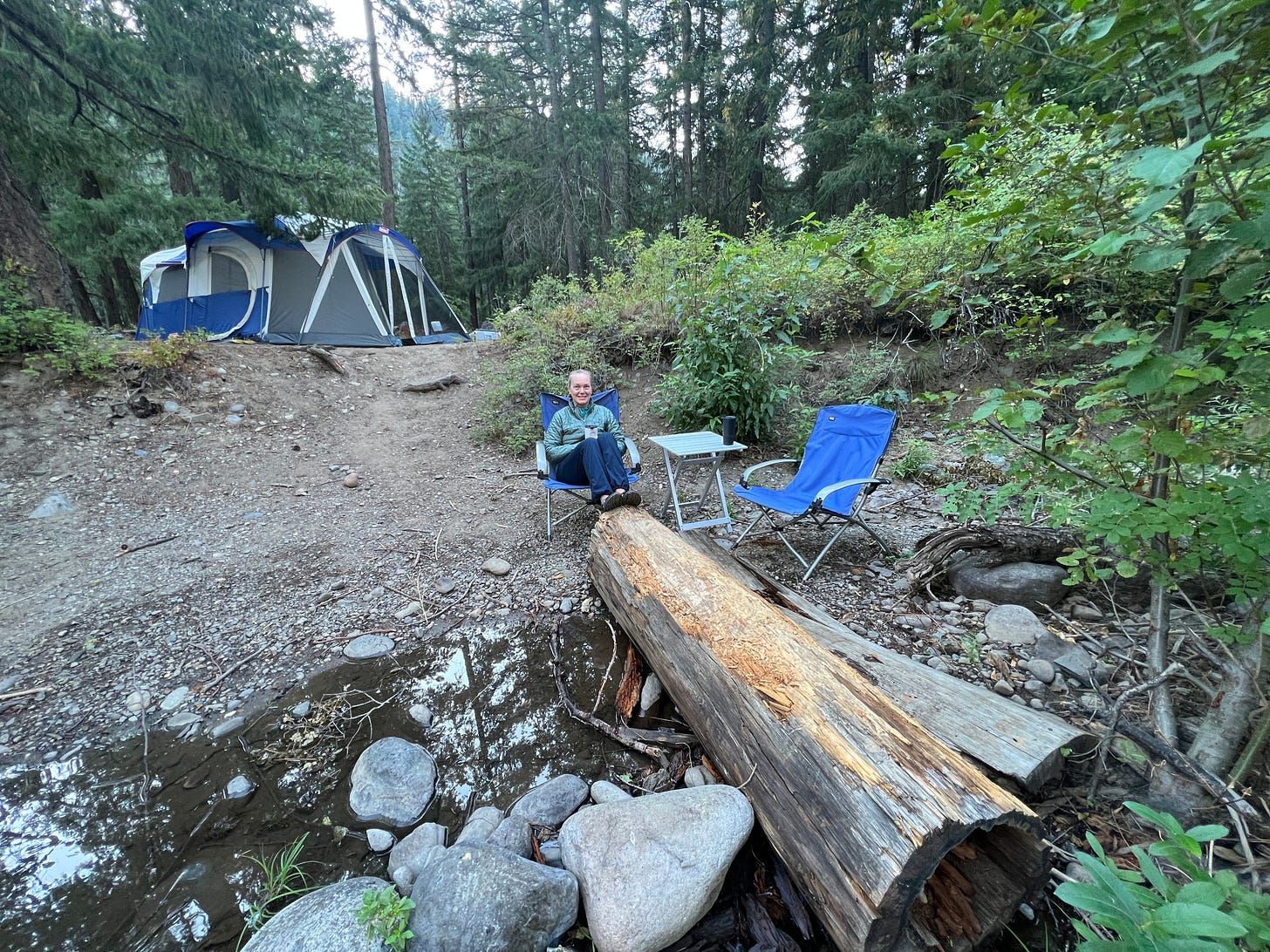

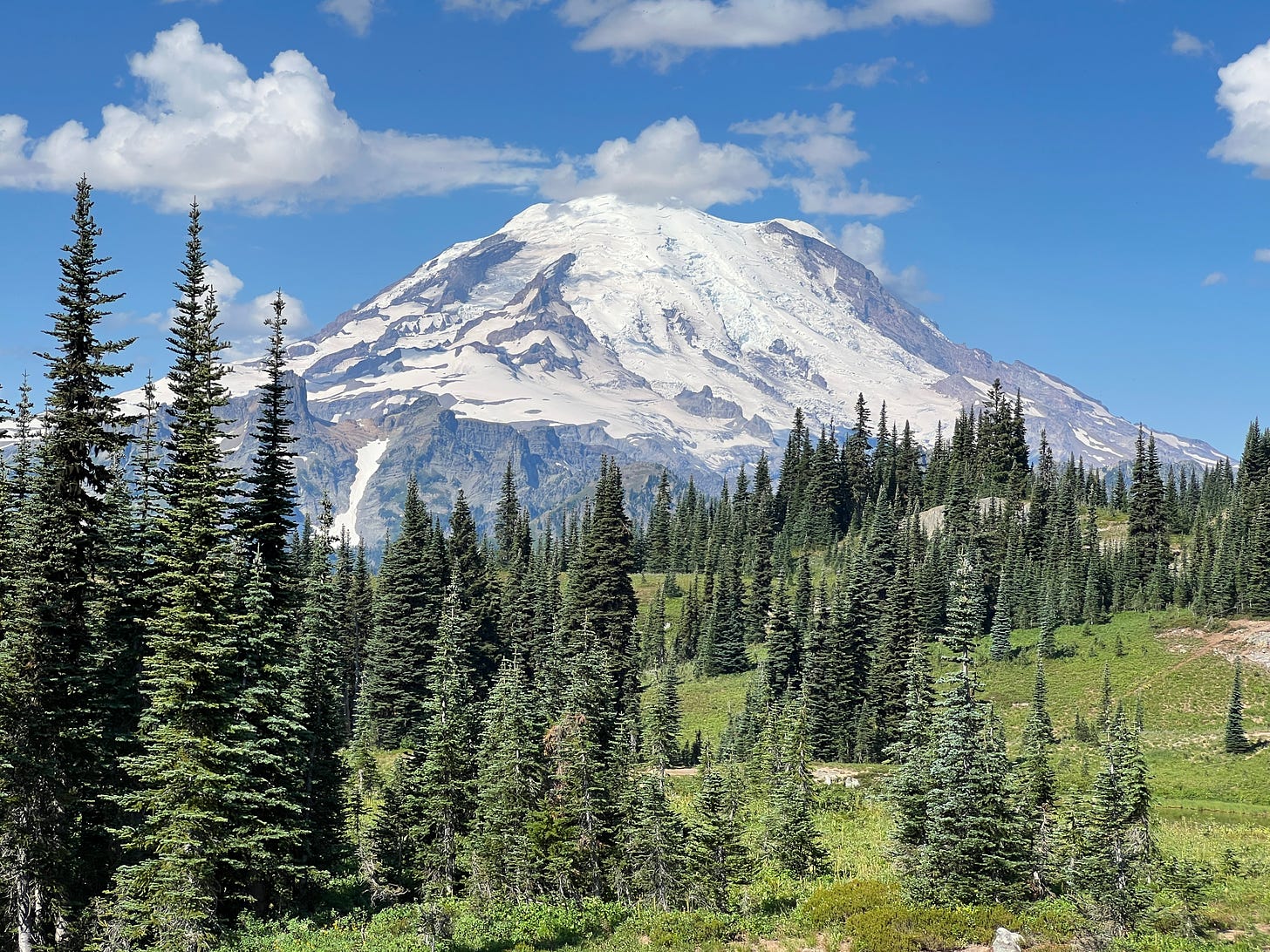
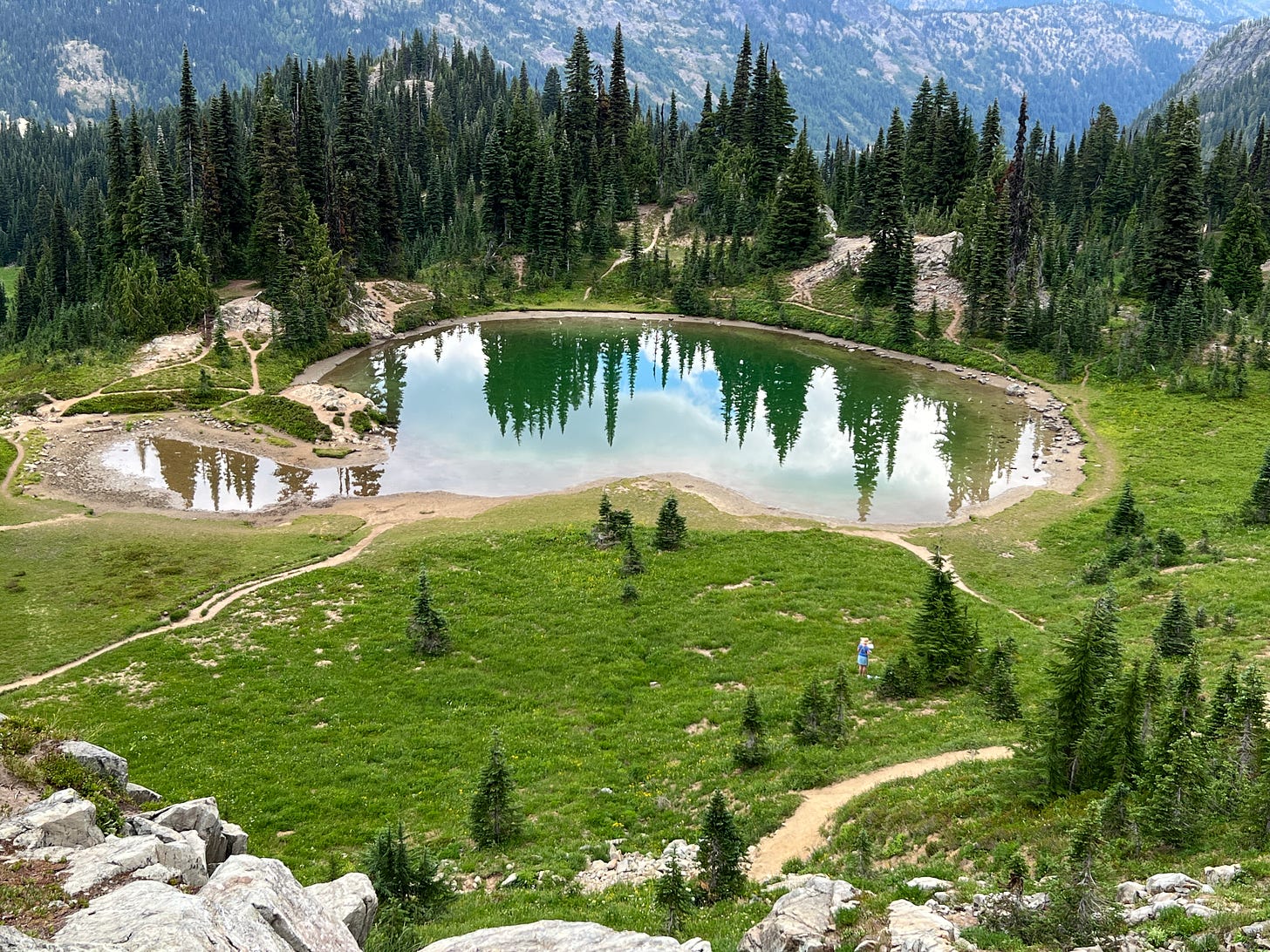
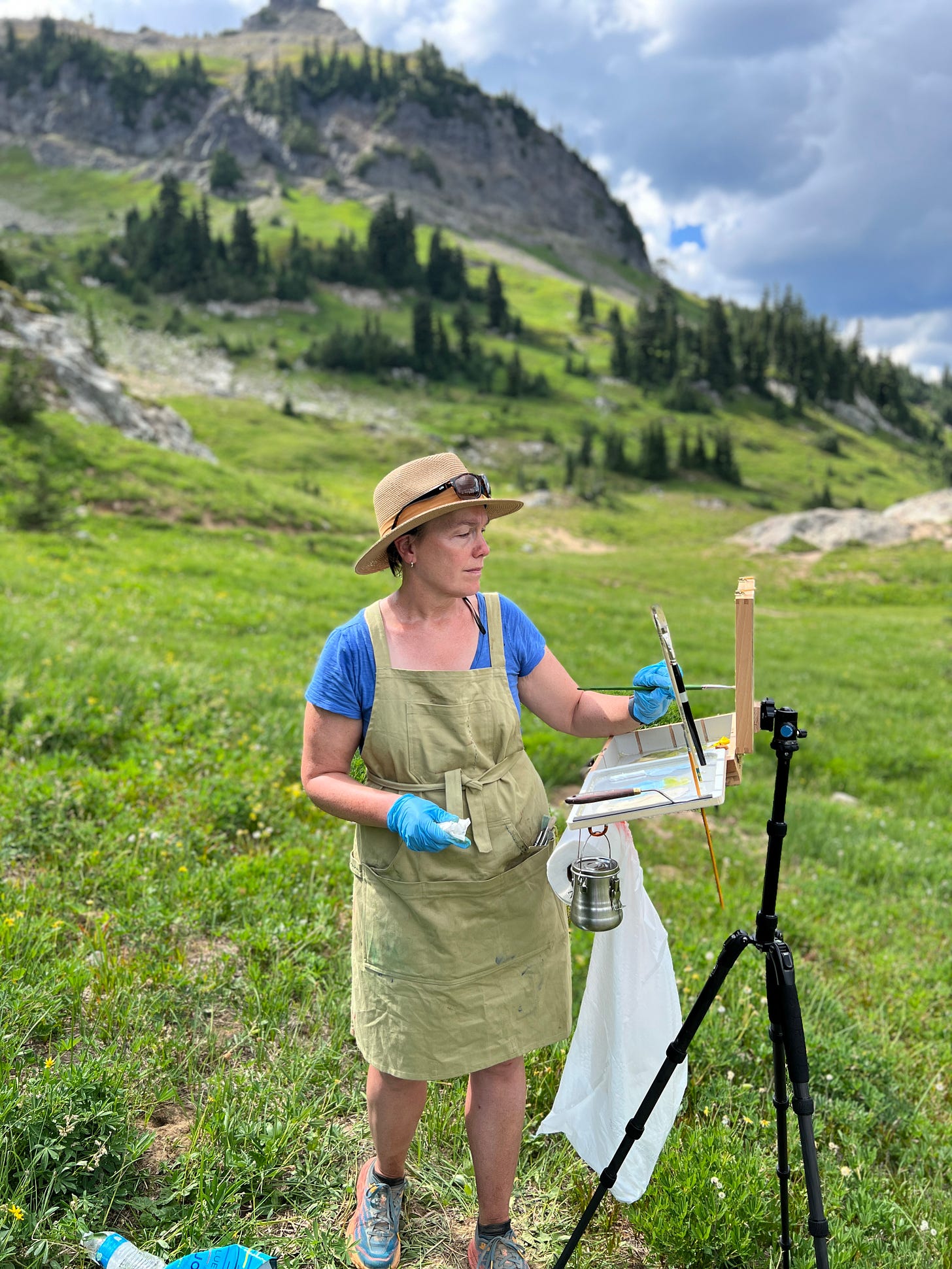

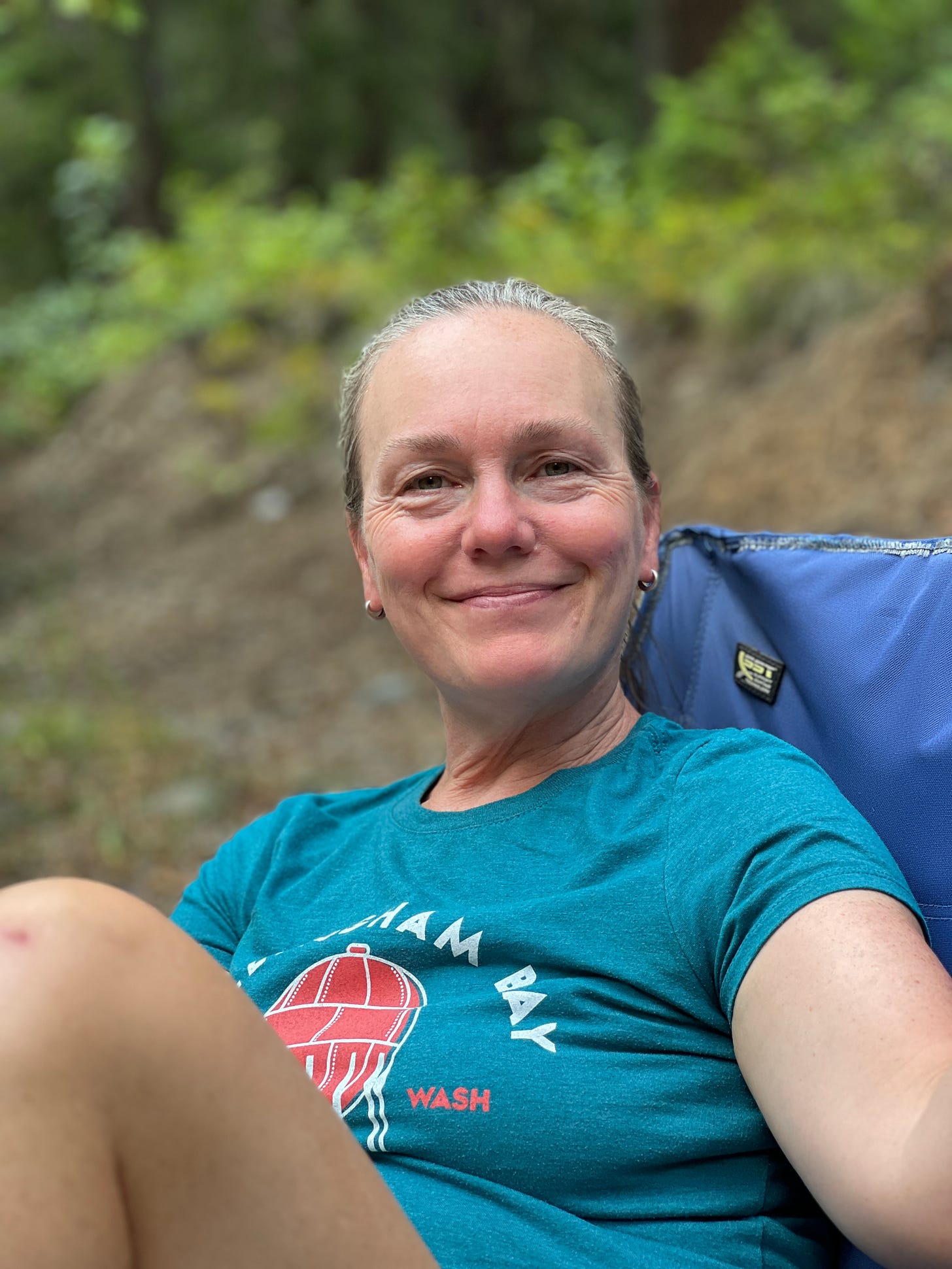

Another great camping story. Great photos really improve your story. One small comment, your readers under 50 may not know who the Clampett's are. : )
Looks so relaxing .